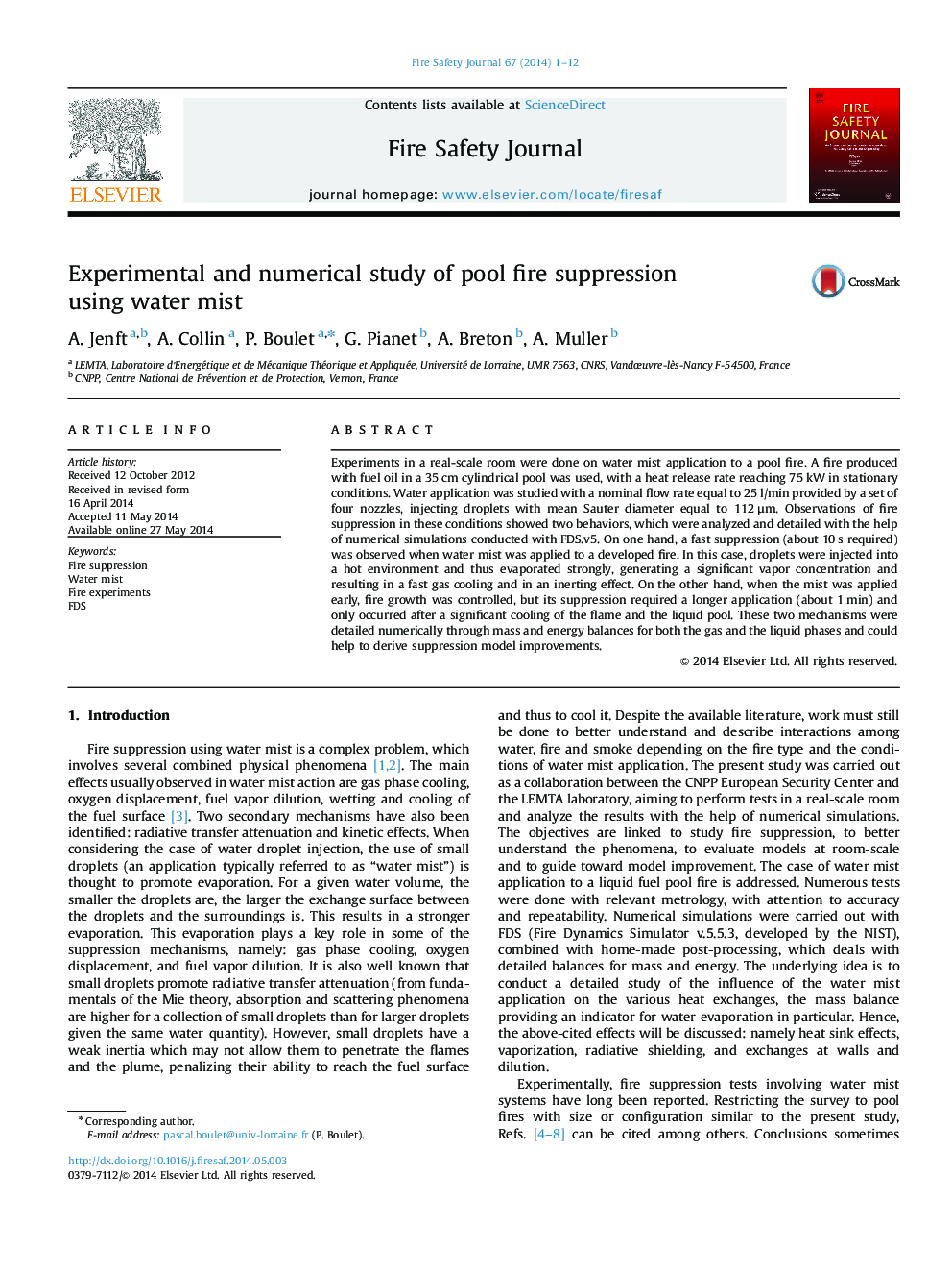| Article ID | Journal | Published Year | Pages | File Type |
|---|---|---|---|---|
| 269855 | Fire Safety Journal | 2014 | 12 Pages |
•Experiments have been conducted on pool fire suppression using water mist.•Water injection is studied on developing fires and on quasi-developed fires.•Numerical simulations are carried out on FDS focusing on heat and mass balances.•The influence of cooling and evaporation processes on extinction is discussed.
Experiments in a real-scale room were done on water mist application to a pool fire. A fire produced with fuel oil in a 35 cm cylindrical pool was used, with a heat release rate reaching 75 kW in stationary conditions. Water application was studied with a nominal flow rate equal to 25 l/min provided by a set of four nozzles, injecting droplets with mean Sauter diameter equal to 112μm. Observations of fire suppression in these conditions showed two behaviors, which were analyzed and detailed with the help of numerical simulations conducted with FDS.v5. On one hand, a fast suppression (about 10 s required) was observed when water mist was applied to a developed fire. In this case, droplets were injected into a hot environment and thus evaporated strongly, generating a significant vapor concentration and resulting in a fast gas cooling and in an inerting effect. On the other hand, when the mist was applied early, fire growth was controlled, but its suppression required a longer application (about 1 min) and only occurred after a significant cooling of the flame and the liquid pool. These two mechanisms were detailed numerically through mass and energy balances for both the gas and the liquid phases and could help to derive suppression model improvements.
